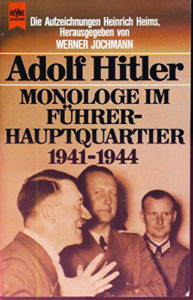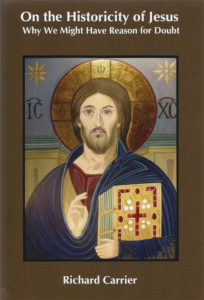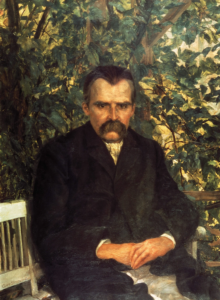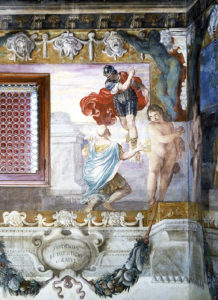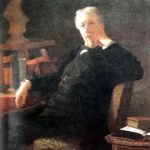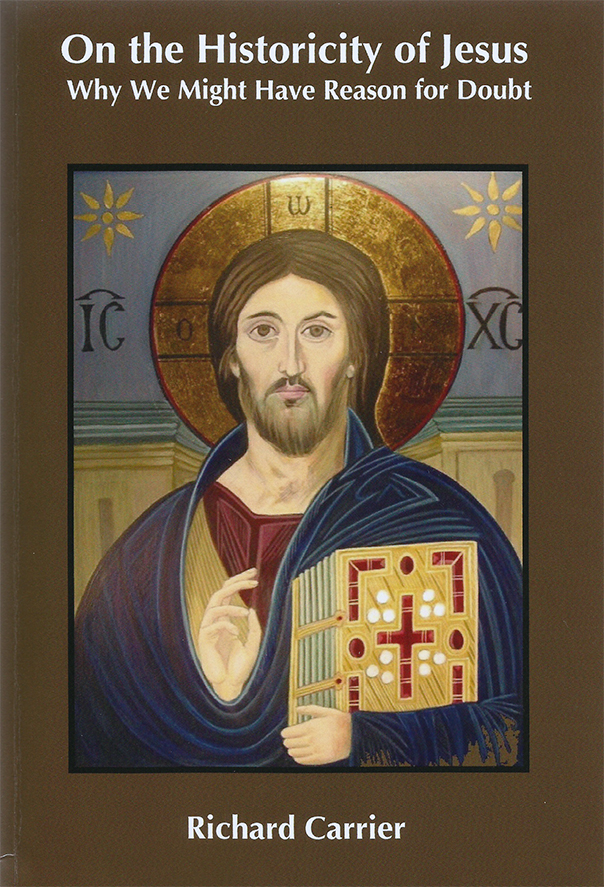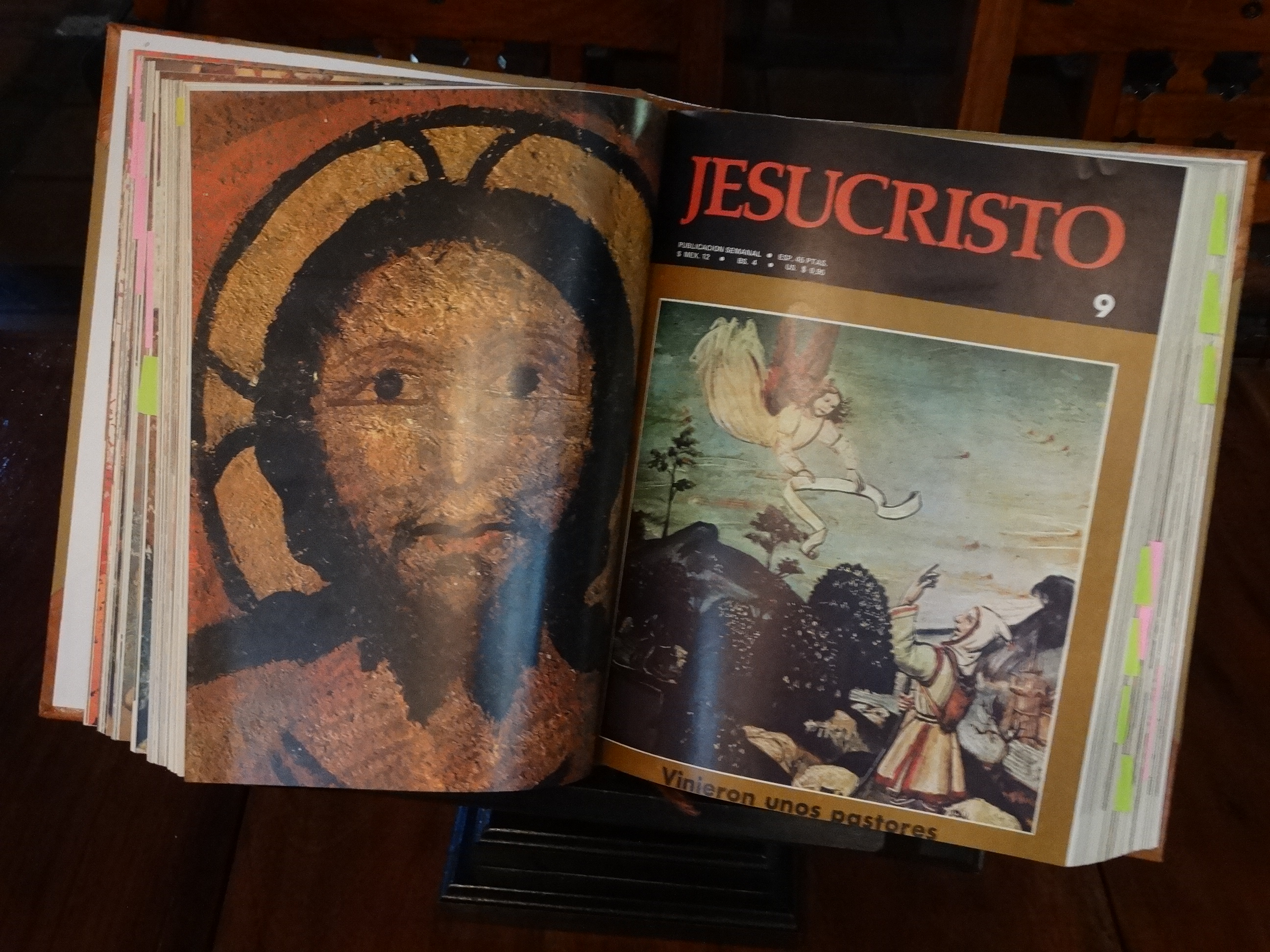Address given at the 2016
JdF 127 Hitler Festival
in Detroit, Michigan
by NEW ORDER Chief of Staff
Martin Kerr
In the Table Talk, Adolf Hitler accepts as a matter of course that the figure commonly known as Jesus Christ was an actual historical person. He describes him as the leader of a popular revolt against the Jews of his time. Savitiri Devi, one of the best known and most eloquent of Hitler’s post-war disciples, felt otherwise. In her essay, Saul of Tarsus, she writes that based on her own extensive research, she believed that Jesus (whose name would have been Yeshua bin-Yusef al-Nazarini or something similar in his native Semitic tongue of Aramaic) was merely a fictional character from Christian mythology; that is, he was not an historical person.
It matters little to us today whether or not Yeshua was real, or whether he was as imaginary as Bilbo Baggins and Huckleberry Finn. But, of course, it does matter to the Christians, who have built up an elaborate if perverse theology based on his putative teachings. In fact, so important has he been to the Christian world that all historical dates are routinely calculated from the year that he was supposed to have been born. That practice started around the year 525 by a Christian monk named Dionysis Exiguus. Years after his birth were counted forwards and those before his birth were counted backwards. Traditionally, these designations have been known as AD for Anno Domini (or “Year of our Lord”) and BC or “Before Christ.” For reasons of Political Correctness, these old terms have now been replaced by CE (for “Common Era”) and BCE (“Before Common Era”).
But regardless of what initials are used, the basic method of calculating and enumerating the years of the calendar has remained unchanged, because Jesus—real or not—is held to be someone who “broke history in half.” In the Christian conception of things, there is an absolute rift between what came before him and what came after. In the conventional wisdom, Jesus changed everything.
______ 卐 ______
In the 1880s, a towering intellectual figure arose in Germany to challenge the accepted dispensation: the philosopher Friedrich Nietzsche. In his autobiography, Ecce Homo, Nietzsche suggested that it was he, Nietzsche, who was the one who would break history in half. Through a process which he called the “transvaluation of all values,” Nietzsche sought not just to supersede Christianity, but to reverse it. Thereby he would lay the foundations for a new European super-civilization. I imagine that in Nietzsche’s scheme of things, future historians would date all history from his, Nietzsche’s coming, and not from the advent of the one whom our Norse ancestors called the “Pale Christ.”
Nietzsche, we note, was completely ignored during his lifetime, except for some cursory interest that he aroused in philosophical circles, which had a negative, dismissive view of his work. That he grandiosely described himself as the man who would break history in half is widely viewed either as sarcasm on Nietzsche’s part, or else as a psychological defensive mechanism to protect his ego from the rejection he suffered from his colleagues.
Perhaps there is a modicum of truth to both of these explanations, but I feel at the heart of things, Nietzsche was being fiercely serious. He recognized the full import and significance of his teachings, even if his contemporaries did not. Today, we National Socialists recognize him as one of the earliest “fragments of the future,” someone who was not the “last of yesterday,” but rather was one of the “first of tomorrow.”
______ 卐 ______
As it turned out, neither the Christian savior nor Nietzsche was the one who broke history in half. The theology espoused by Jesus was merely a reshuffling of the older Semitic worldview, a prime feature of which was the belief that there is a dichotomy between spirit and matter. Spirit is pure and good, it tells us, while the flesh is impure and corrupt. Nietzsche, for all his genius, was unable to articulate a realistic, systematic alternative to the Christian worldview.
No, it remained to Adolf Hitler to be the man to shatter the dispensation that had held Aryan man in thrall for 2,000 years or more.
I do not know when the realization first entered the Führer’s mind that there is no division between soul and matter, but rather that our flesh is infused with and animated by our spirit, while spirit is given form by our bodies. It must have been at a very young age. Probably, it did not dawn on him all at once, but instead only emerged gradually as he matured intellectually. In any event, by the time that he sat down to write Mein Kampf, his basic worldview was already well-formed and complete.
Adolf Hitler believed that the universe was governed by natural laws, and that for man to be happy and successful, he must first acknowledge that these laws exist; secondly, he must discover what they are; and thirdly, he must live in accordance with them.
This is another way of saying that the universe runs according to the principles of Causality—that is, of cause-and-effect relationships—and that it does not operate on the basis of supernatural forces, or on the mental constructions and wishful thinking of intellectuals and ideologues, or on the religious fantasies of theologians.
But at the same time, he knew that the human soul or spirit was a reality. His consistent use of religious language and imagery, plus specific comments recorded in Table Talk, reveal the Führer to be a deeply religious man, even if his spiritual outlook was diametrically opposed to that of Christianity.
Rather than believing that Man is born as a sinful being who can only be rescued from eternal hellfire and damnation by accepting the good lord Jesus as his personal savior, Adolf Hitler believed that Man was born into a state of grace with the Natural Order. In the Hitlerian worldview, we are all holy beings at birth. It is through being raised with false beliefs, and thrown into a society out of synch with the Natural Order, that we lose our state of natural grace and holiness.
Matt Koehl once discussed the Christian conception of original sin with me, contrasting it to the Hitlerian outlook. “If you look at a newborn baby in its cradle, what do you see?” he asked. “The Christians see an evil being born in sin, and doomed to Hell and torment without the intervention of their savior. But as a National Socialist, I see an innocent and holy being, born into a state of harmony and grace with the Natural world.”
This is the Führer’s great gift to Aryan man—and, indeed, to the whole world: he has restored us to a state of grace with the Natural Order. Hitler made us holy again, and only the Gods have the power to sanctify.
______ 卐 ______
As Aryans, we may be endlessly, sincerely, and profoundly thankful on a personal level for such insights. But unlike the Christians, as National Socialists, we are committed not just to our own personal salvation, but to the salvation and resurrection of our Race.
How do we incorporate our fundamentally religious perception of National Socialism into the practical work of building Adolf Hitler’s earthly movement? We struggle with these issues today—but we are not the first to have raised such questions.
Our great forbearer, George Lincoln Rockwell, wrestled with this question as well. During the final year of his life he prepared to transform his tiny, noisy band of political dissidents into a mighty mass movement. In a passage from his book, White Power, he gives us his thoughts on the future religious or spiritual orientation of the movement:
National Socialism, as a PHILOSOPHY, embodies the eternal urge found in all living things—indeed in all creation—toward a higher level of existence—toward perfection—toward God.
This “aristocratic” idea of National Socialism—the idea of a constant striving in all Nature toward a higher and higher, more and more complex, and more and more perfect existence—is the metaphysical, supernatural aspect of our ideal.
In other words, concepts of social justice and natural order are the organs and nerves of National Socialism, but its PERSONALITY, its “religious” aspect—the thing that lifts it above any strictly political philosophy—is its worshipful attitude toward Nature and a religious love of the Great gifs of an Unknown Creator.
Christianity, for instance, is a far higher thing than its rituals, the words of its prayers, or any of its creeds. It is a SPIRITUAL STRIVING toward the believer’s ideals of spiritual perfection.
National Socialism is the same sort of striving toward even higher and higher levels here on this earth, while Christianity is striving toward a future and later life not of this earth.
For the ordinary “soldier” in our “army”, building and fighting for Natural Order—National Socialism—it is sufficient that they respect and obey the laws and doctrines established by the lofty ideals of our philosophy with merely an instinctive love of those ideals, perhaps not with the complete understanding of the highest forms of our philosophy.But just as the greatest Christian leaders have been those not preoccupied with details and rules but rather those who were “God intoxicated” with the highest ideals of the religion, the leaders among our National Socialist elite must share this fundamentally religious approach. For them the true meaning of our racial doctrine must be part of their idealistic “striving toward God.” [1]
Through total identification of ourselves with our great race, we partake of its past and future glories. When we contribute in any way, especially by self-sacrifice, toward helping our race along the path toward higher existence, we reach toward God—the Creator of the Master Race.
In short, while the mechanics and rules of National Socialism, as codified and set forth here, are sufficient for most of us, for the few idealists ready and willing to sacrifice their very lives in the cause of their people, National Socialism must be a very real religious ideal—a striving toward God.
We should all keep Commander Rockwell’s words in mind as we go forth into the world in the coming Jahre des Führers 127. We should endeavor to bring every single racially conscious White person into our Movement. But at the same time, we must maintain the ideological purity of our Cause by seeing to it that only those with a clear understanding of the spiritual, religious character of our worldview become Movement officers. And this is especially true with members of the senior leadership corps.
In this way, we will guarantee that we, too, are “breaking history in half,” in keeping with the Führer’s mission.
HEIL HITLER!
_____________
[1] From White Power, chapter XV, pp. 455-457.
